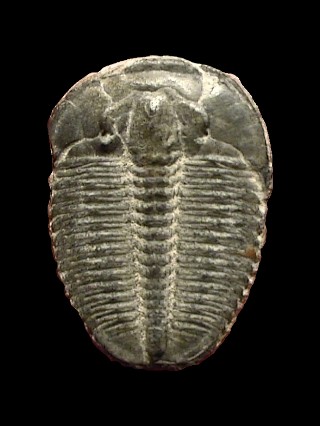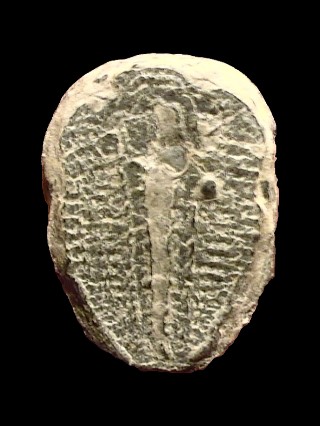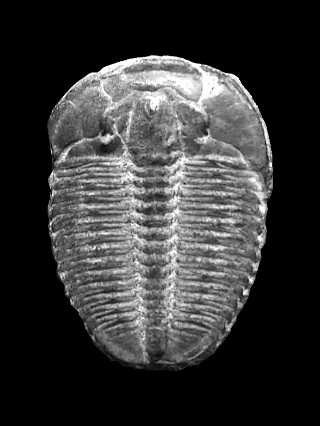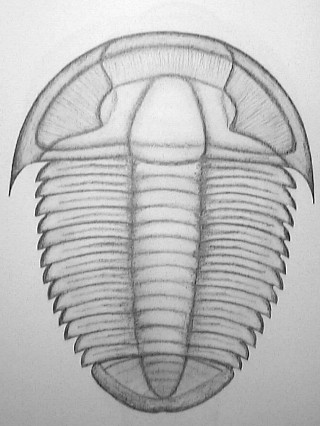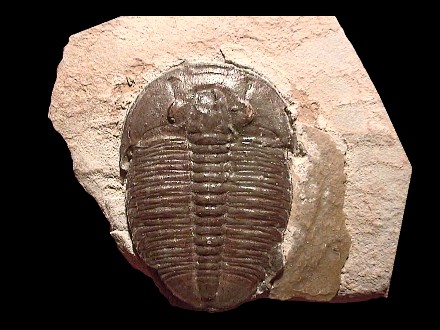This is one of the most famous trilobite of the world, as well known as the
morrocan classic Flexycalymene ouzregui.
Ican say that this website is nothing more than the result of a gift made 25
years ago ;)
|
Order
|
Ptychopariida
|
SWINNERTON 1915
|
A large, heterogenous order, with
classification problems. Occurence : Cambrian to Upper Ordovician.
- Cephalon : Generally bearing genal spines.
- Typically opisthoparian facial sutures
- Gently forward-tapering simple glabella bearing a broad, rounded front.
- Usually 3 pairs of rather narrow parallel glabellar furrows.
- Natant hypostome (some forms conterminant).
- Rostral plate shorter than the glabellar length.
- Thorax : Typically large, with 8+ thoracic segments.
- No fulcræ.
- Pygidium : Quite variable, without noticeable structures.
- Typically with a small pygidium bearing a border with terrace lines
(Cambrian forms) or a larger pygidium, with or without border (post-Cambrian
forms).
|
|
Suborder
|
Ptychopariina
|
RICHTER 1933
|
Paraphyletic primitive Ptychopariida, a large and extremely plesiomorphic
group.
- Cephalon : Glabella usually tapering or barrel-like.
- Usually 3 pairs of glabellar furrows.
- Sutures typically opisthoparian (but some proparian, and blind forms
marginal)
- Anterior sutures usually convergent to slightly divergent, posterior
sections moderately to highly divergent.
- Eyes usually present, medial, and near glabella
- Usually blade-like genal spines present.
- Relatively narrow rostral plate.
- Thorax : Generally long, relative to pygidium.
- Pygidium : Micropygous to subisopygous.
|
|
Superfamily
|
Ptychoparioidea
|
MATTHEW 1887
|
Occurence : Cambrian to Ordovician. Forms with oval, elongate, exosqueleton.
- Cephalon : Semi-circular.
- Opisthoparian sutures.
- Typically with well-defined border.
- Glabella tapering forward, bearing 3 to 4 pairs of glabellar furrows.
- Preglabellar field present, convex or flat.
- Natant hypostome.
- Short to medium sized genal spines.
- Eye ridges usually present.
- Exceptions include eyeless forms (Conocoryphidae), proparian forms
(Norwoodiidae), rounded genal angles and gonatoparian sutures (Menomoniidae).
- Thorax: Relatively broad.
- Typically 12 to 17 segments.
- Pygidium : Micropygous but exceptionally isopygous (e.g., some
Asaphiscidae, Cooselidae).
- Transverse, pleural field nearly flat, with distinct pleural grooves;
- Few segments.
- Devoid of border.
|
|
Family
|
Alokistocaridae
|
RESSER 1939
|
Occurence : Lower Cambrian to Upper Cambrian.
- Cephalon : Preglabellar area wide.
- Glabella somewhat taperring.
- Facial sutures rather deeply concave opposite the glabella.
- Eye ridges well developped.
- Palpebral lobes small.
- Genal spines of moderate size.
- Pygidium : Micropygous.
|
|
Genus
|
Elrathia
|
WALCOTT 1924
|
- Cephalon : Alokistokarid with rather wide cranidium.
- Strong eye ridges.
- Longitudinal striæ on a wide preglabellar area.
- Commonly, tubercules on cranidium.
- Pygidium : Relatively large.
- Few segments.
- Little developped segmentation.
|
|
Species
|
kingi
|
MEEK
|
A medium sized trilobite with a smooth subovate carapace that is tappered
toward the posterior.
- Cephalon : Evenly rounded anteriorly.
- Glabella unfurrowed, slightly tapered and broadly rounded anteriorly.
- Genal spines generaly extanding to the 2nd or 3rd thoracic segment.
- Thorax : Usually 13 segments.
- Pygidium : 4 axial rings.
- Long terminal piece.
- Posterior margin usually with a broad medium notch.
|
Another specimen, slightly larger and better articulated, but lacking the right
genal spine. Remark the broad medium notch on the posterior margin of this specimen.
Founding place : same locality.
